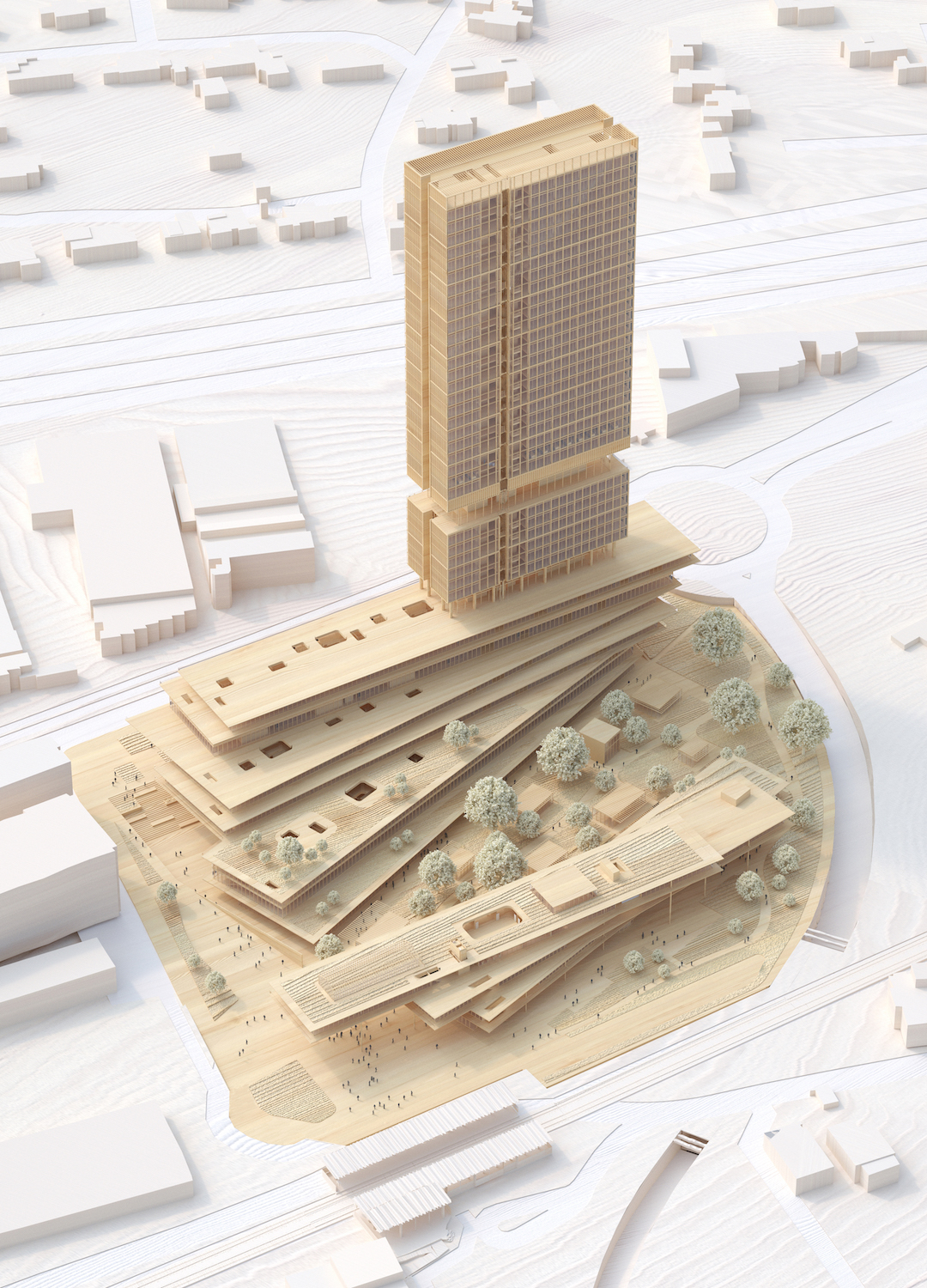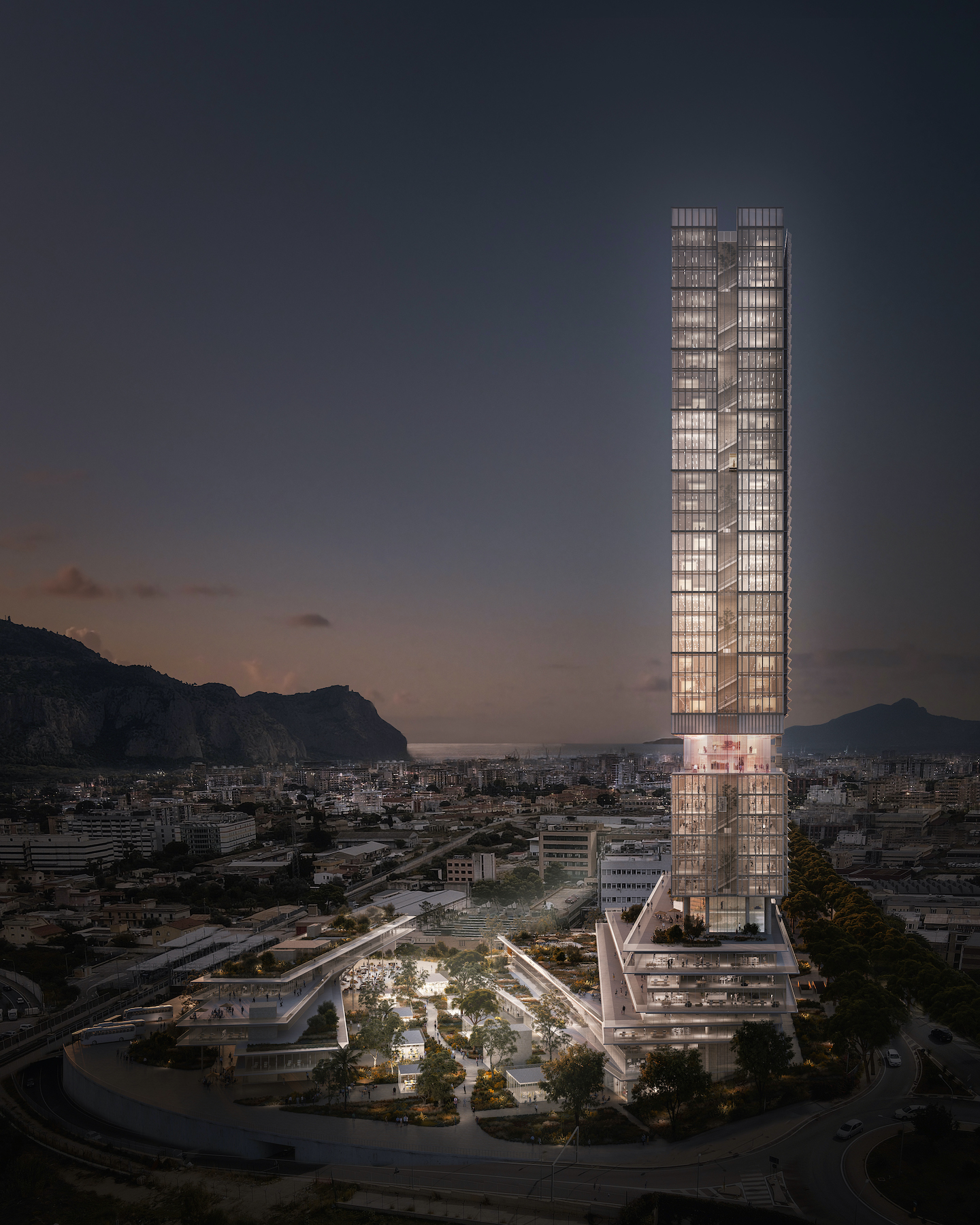A tower, a podium, a hub. A complex located in the centre of Palermo’s Conca d’Oro. As a first and priority step in urban regeneration. As a symbol of modernity, sociability and gathering. A base for public administration in which, for the very reason it is public, is capable of opening up to the citizens even on non-working days and of attracting them with its beauty.
This is how we at Stancanelli Russo Associati, (a young professional architect, Francesco Bottaro) together with Studio Akkerhuis who led the architectural design, took part in the competition launched by the Region of Sicily for the Region’s Management Centre, to house all the buildings of the Administration and related associations.
And even though we were not selected, we would like to share the design, structural, energy, urban impact idea we presented.
A NEW ICON IN THE HEART OF THE CONCA D’ORO
The project we presented was with the desire to respond to these objectives:
- to recreate a new “Conca d’Oro” within a “design valley” formed by the various buildings, which follow the orography of the surrounding landscape, bringing back to this area tormented by the Sacco di Palermo all the characteristic essences of the Conca;
- to create a new point of interest, not only visually and in terms of the landscape, but also as a banner of innovation and modernity, thus energising the urban layout;
- to bring new functionality and beauty into the intrinsically ‘bureaucratic’ nature of the new building;
- imagine an iconic building for the entire region, and one that bears witness to the transition from the last 100 years of architecture to the next 100;
- enhancing the history of the territory, in which the complex is inserted, as a symbol of the welcoming spirit of Sicily and Palermo;
- Integrate the building into the territory, harmonising its aesthetics with the built-up area and the natural element. The landmark looks towards the sea but at the same time soars towards the mountain, preserves the intrinsic balance of the places and dialogues with history and geography.
In order to meet these objectives, the project was designed to break the isolation of the area through a new road system centred on two main axes and hinged on the development of intermodal transport. Urbanity and nature are not alternative, divergent or contrasting, but make up the same integrated system between the “workplace” and the “recreation place”.

THE THREE BUILDING STRUCTURES
Designed to operate 24 hours a day, 7 days a week, 365 days a year, the building consists of a tower – the new landmark – for offices (10 compartments on three levels, interspersed with three restricted levels for the canteen and a museum of Sicilian natural history) with two lower bodies at the base: the podium and a public hub, open and connected to the surrounding neighbourhood.
The podium is intended for those departments which, for reasons of organisation, number of users and the surface area necessary for their operation, cannot be absorbed by the tower’s 10 compartments. Its hall is covered and accessible to all, both to Sicilian Regional Government employees and to the public, thanks also to the presence of spaces for commercial activities, fitness and catering, and the 1500-seat conference centre.
Completing the structure is the hub: a large crossroads for facilities and people; a public meeting place, exchange and services, with an entrance from the outside, which will house: school bodies; municipal offices; some conference rooms; a medical centre; and the library.
The ground floor also facilitates both the installation of a covered market and the passage and movement of large flows of people, as is to be expected due to the adjacent presence of various elements of intermodal transport: Railway station, car park, bus terminal, pedestrian and bicycle paths (with parking in the vicinity), tram stop.

MATERIALS AND ENVIRONMENTAL SUSTAINABILITY
In addition to the decision to bring the ancient “Conca d’oro” back to life as the site of flourishing crops and rich vegetation, the outdoor green areas have been planted with olive trees, lemons, medlar trees, eucalyptus, ash trees, myrtles, prickly pears, agaves, palms and shrubs (paradigm plants of the historical attitude of the people of Palermo and Sicily in general to welcoming and peaceful coexistence among people of different cultures, religions, languages and customs). The materials used in the project were also chosen with respect for traditional Sicilian craftsmanship, materials that for centuries have been integrated into the island’s lively, multicoloured context, with the blues of the sky and the sea, the yellows, greens and browns of the surrounding mountains. Materials that have proven to be ductile and resistant over time.
These have been revisited from a modern perspective, combining with aluminium and steel. The search for colours focused on soft lines for the exterior of the building, favouring white/beige/sand of pearl marble from Sicily and sandstone, traditional stones from Palermo. Combined with pigmented and strongly textured cement in similar colours.
The simplicity and homogeneity of these materials make it possible to appreciate the shadows on the elevation and the changes of colour during the hours of the day.
STRUCTURAL CONFIGURATION
Our proposal envisaged a tower building with a rectangular plan and 42 floors plus the roof and 3 basement floors (up to 172 m above ground level). The building is structurally independent from the other buildings by means of a structural joint. For the pillars, a distribution around the perimeter of the standard floor plan was assumed, which can be easily integrated into the planned architectural layout. The arrangement of some of the pillars thus conceived will be interrupted in correspondence with the floors where the narrowing of the building section occurs, with reticular structural planes to take up the stresses and coupling systems from above.
The strategy implemented in relation to the structural design of the Podium and the Public Hub has led to the choice of adopting a passive type of earthquake protection system. This system will be pursued by means of anti-seismic isolation with Friction Pendulum isolators placed at level -1 from Via La Malfa, and at the base of the reinforced concrete cores where the vertical connections (stairs, lifts, cavities) will be allocated, isolated immediately above the foundation level at level -4.
Finally, we are pleased to thank all the friends who, in addition to the aforementioned Studio Akkerhuis, contributed to developing this idea with us:
- For the structures SCE Project of Rome;
- For the installations, the Engineers Claudio Consoli, Melita Pennisi e Salvatore Lamberti of Catania;
- For the fire-fighting design, Studio Luglio of Varese;
Mada Engineering of Catania for the road network design.





